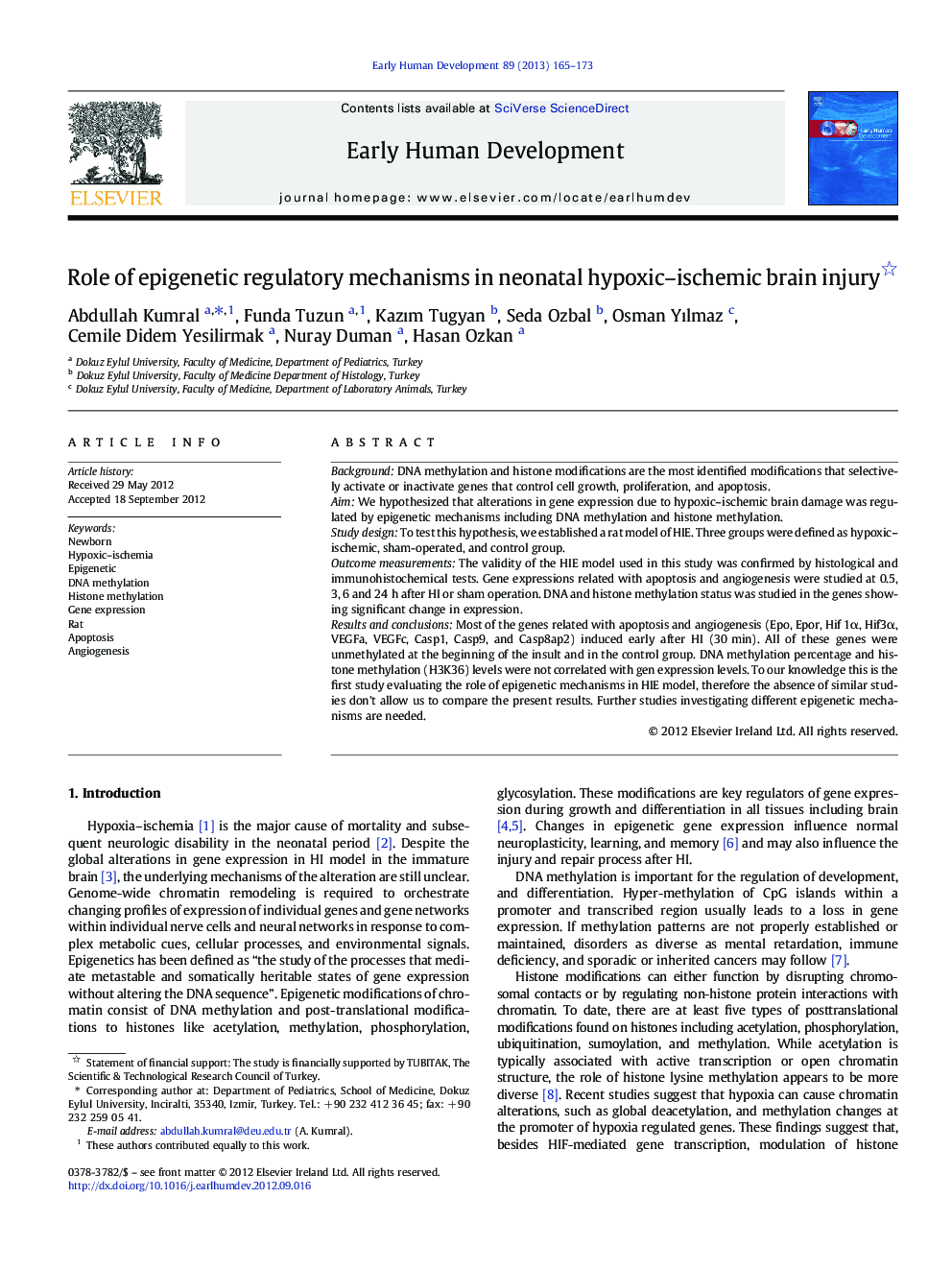| Article ID | Journal | Published Year | Pages | File Type |
|---|---|---|---|---|
| 3918250 | Early Human Development | 2013 | 9 Pages |
BackgroundDNA methylation and histone modifications are the most identified modifications that selectively activate or inactivate genes that control cell growth, proliferation, and apoptosis.AimWe hypothesized that alterations in gene expression due to hypoxic–ischemic brain damage was regulated by epigenetic mechanisms including DNA methylation and histone methylation.Study designTo test this hypothesis, we established a rat model of HIE. Three groups were defined as hypoxic–ischemic, sham-operated, and control group.Outcome measurementsThe validity of the HIE model used in this study was confirmed by histological and immunohistochemical tests. Gene expressions related with apoptosis and angiogenesis were studied at 0.5, 3, 6 and 24 h after HI or sham operation. DNA and histone methylation status was studied in the genes showing significant change in expression.Results and conclusionsMost of the genes related with apoptosis and angiogenesis (Epo, Epor, Hif 1α, Hif3α, VEGFa, VEGFc, Casp1, Casp9, and Casp8ap2) induced early after HI (30 min). All of these genes were unmethylated at the beginning of the insult and in the control group. DNA methylation percentage and histone methylation (H3K36) levels were not correlated with gen expression levels. To our knowledge this is the first study evaluating the role of epigenetic mechanisms in HIE model, therefore the absence of similar studies don't allow us to compare the present results. Further studies investigating different epigenetic mechanisms are needed.
